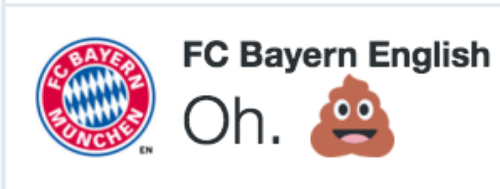Oil slick or oil tanker - who has the most engaging formula in motor sport?
You’d call it a battle but, by definition, that means both sides are properly competing.
So let’s just say there is a social media ‘thing’ going on in motor sport right now.
A new up-and-comer scratching away at the old order using digital to excite the millennial masses.
There is a similar story between boxing and MMA (most notably UFC) but at least the traditional pugilists are prepared to lace up their gloves for the social media scrap.
This tale of change (oh, OK, “disruption” if you must) is about the petrol-heads and their more eco-friendly rivals.
“It is a familiar story of a new pretender using digital/social to muscle their way into a sporting market while the incumbent takes the oil tanker route to similar innovation arguing that TV partners must be protected.”
At the end of April, the digital team at Formula E, motor racing with electric-only cars, had a good week. Within a couple of days they picked up prestigious industry awards for Best Mobile Video Experience and Cutting Edge Sport. Of course these subjective gongs can be meaningless but, broadly speaking, they indicate solid work.*
The timing was pertinent as their awards came just two days after Ferrari president Sergio Marchionne had criticized F1 for failing to fully embrace social media.
"We need to change the way in which we relate to the fans, to the way in which the actual races become accessible to everybody,” he told Autosport.
"The digital side of this business, to be honest, is not what I would call the most evolved. There are things that need to be done, everybody is aware of them, and we are all pushing to get them done.”
F1 is reputed to be the most watched sports series in the world and, from this semi-interested spectators’ perspective, is the pinnacle of motor sport.
Its success has been masterminded by the business acumen of Bernie Ecclestone and, crucially, his TV deals.
Recently the key has been exclusivity. And the protection of TV rights has meant, for example, that unlicensed content on YouTube must be strictly policed. Meanwhile in February, Romaine Grosjean was asked to take down behind-the-scenes Facebook Live content that had already reached a million views. Given the road F1 has travelled in order to become a global sporting powerhouse it is understandable. Many governing bodies have applied the same policy and there was support within the ranks.
Romain Grosjean was asked to take down behind the scenes Facebook Live content
“People blame Bernie for not moving into social media,” Mercedes F1 team boss Toto Wolff said in summer 2014. “I don’t blame him at all because he can’t monetise it. You have TV stations and media partners who pay you for exclusive content so why do you want anything to do with social media making it for free? It doesn’t work. The only ones who are winning in social media are the gatekeepers - Facebook, Twitter, Instagram you name it.”
Interestingly, the same article suggested that small-screen revenue had gone up despite a dip in audience figures. With the general trend of younger audiences moving from TV to digital and social platforms, perhaps F1 felt it had to follow.
Therefore, in December 2014, Ecclestone spoke again to Forbes and it seems, somewhat begrudgingly, had shifted his position. The plan was to be “more active” on Twitter then develop a presence on YouTube and, once the legalities were sorted out, Facebook.
By that time, Formula E was four months into its inaugural championship. From the start, it has been the T20 to F1’s Test Match.
The circuits are predominantly in city centres and the entire race takes place in one day with two practice sessions in the morning and a main event in the afternoon. A race is roughly 50 minutes long with one mandatory pit-stop to change cars.
The big digital innovation is Fanboost where supporters can give their favorite driver an extra boost of power by voting for them via social media.
The Formula E home page has only four stories supported by social media tiles from racers and teams. The focus is obvious.
Now this is not an old ways = bad, new ways = good story. Formula E could be merely a novelty and F1 has achieved its revered status for a reason.
It is just that, in terms of millennials’ attention, F1 may not have been fishing where the fish are.
But it does have clout, with a c if not a K. According to the Forbes’s list of the World’s Highest Paid Athletes in 2015, motor racing drivers were well represented – Lewis Hamilton (15th), Fernando Alonso (17), Sebastien Vettel (21), Kimi Raikkonen (32).
Given that, having only two drivers in the top 200 athletes in the Facebook/Twitter rankings - Hamilton (72), Nico Rosberg (140) – smacks of an acute underachievement. More NASCAR drivers made the list.
It is worth pointing out that, with the recent emphasis and its deep historical roots, F1’s social channels are many multiples of Formula E in terms of follower numbers. This is not a story of overnight revolution.
However engagement figures would be much more illuminating if they were public and given F1 only started a channel 18 months ago it is not surprising that Formula E are most competitive on YouTube.
A recent clip of a gymnast backflipping over a speeding race car achieved 5 million views. F1’s most popular video has 1 million.
So this is a story without a conclusion and certainly, in a sporting context at least, UFC is a much more real threat to boxing than Formula E is to F1 right now.
However, for all the pre-mortems, Floyd Mayweather and Manny Pacquiao are pay-per-view athletes. Ironically enough, an exalted TV status that has propelled them to No 1 and No 2 in that Forbes Rich List list.
Yet it is a familiar story of a new pretender using digital/social to muscle their way into a sporting market while the incumbent takes the oil tanker route to similar innovation arguing that TV partners must be protected.
Some major governing bodies have changed course in recent years, opening up more content on platforms while maintaining enough exclusivity to keep the rights holders happy.
A balance is being struck.
Of course there is a better, more holistic solution. A truly integrated content strategy, in which digital/social has equal importance and resources to its TV cousin. Better still it is all just classed as 'content'. In this scenario the incumbent could support the existing revenue and entice new audiences with a complimentary, not competitive, narrative.
But that is another story for another day.
Please feel free to comment or like below.
* Full disclosure: Tom Halls is a friend and fellow SEAT Steering Committee member. That notwithstanding, he does great work in my opinion.
Further reading
Forbes article June 2014 Forbes article Dec 2014
Forbes Rich List
Top 200 Athletes - Facebook/Twitter
F1 - Website / You Tube Formula E - Website / You Tube




